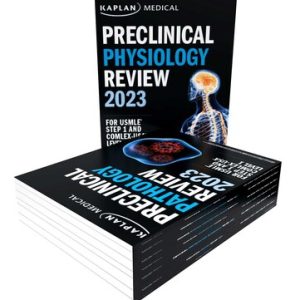ECGAcademy: Basic To Advanced Theory + Chalktalk Videos (Up To December 2016)
Learn To Read Electrocardiograms
By Watching Video Tutorials.
Recognized as a worldwide leader in online ECG training,
ECG Academy is taught by a Cardiac Electrophysiologist and award-winning educator.
Become An ECG Expert!
WHY USE ECG ACADEMY?
Did you ever try to learn ECGs from a book?
ECG interpretation can be very frustrating if there’s no one to help you practice and show you what you might be doing wrong. Are you uncomfortable with difficult tracings? Did you ever wish you could spend hours with an ECG expert and have him show you exactly what you should be looking for?
ECG Academy® is head-and-shoulders above any other educational experience you can find, whether it is live in a classroom or on the internet. The videos are high-definition and crammed with tips, tricks, and insights that only an expert can bring to you. Best of all, you can go back and watch them over if you forget something. You can’t do that in a classroom! Subscribe for as long as you need, then maintain your skills with weekly “ChalkTalks,” which are really fun 5-minute videos where you learn how to read those tricky tracings that don’t look like the textbook!
ECG Academy was created by Dr. Nicholas Tullo, a cardiac electrophysiologist (heart rhythm specialist). He has been teaching ECG interpretation since 1985, when he started his career in cardiology. Countless students, nurses and doctors have enjoyed his uncanny ability to make complex concepts easy to understand. Register for the FREE Introductory level, and you’ll agree that this is the best way to learn ECGs. Then subscribe to the ECG Academy and start your journey to becoming an ECG Expert!
Let ECG Academy help you
Look at ECGs in a Whole New Light!
Why Choose Us?
- Easy to understand video lessons – we SHOW you so you don’t have to read a textbook
- Step-by-step instruction from basic to advanced
- Taught by a physician specialist / cardiac electrophyiologist
- Weekly practice “ChalkTalks” (example below)
- Earn CE Contact hours with Certificate Courses
- ECG training solutions for schools, hospitals, and industry are available
Syllabus For The Basic Level
INTRODUCTION
- What is the ECG Academy?
ENGINEERING CONCEPTS
- Basic electrical concepts – what is electricity
- Electrical circuits
- How we record electrical events
INTRO TO THE HEART
- Cardiac tissues and electricity
- Cardiac Action Potentials
- 3-D Anatomy of the heart
- Cardiac conduction system
- Electrical events of the heart
ECG RECORDING BASICS
- ECG recording systems
- ECG electrode: correct placement
- ECG electrodes: incorrect placement
- Intrinsic problems with ECG systems: Artifacts
ECG LEAD BASICS
- The basics of ECG “leads”
- Frontal or Limb leads
- Chest or Precordial leads
THE NORMAL ECG
- The ECG signal: First impressions
- Analyzing size and timing/duration of signals
- Determining heart rate
- ECG Interval measurements 1
- ECG Interval measurements 2: Practice
NORMAL SINUS RHYTHM
- Recognizing NSR
- Sinus bradycardia / sinus tachycardia
- Sinus arrhythmia
SINUS NODE DYSFUNCTION
- Sinus bradycardia
- Sinus pause / sinus arrest
- SA Exit Block
AV NODE DYSFUNCTION
- Basic concepts of AV block
- First degree AV block
- Second degree AV block
- Third degree AV block
INTRAVENTRICULAR CONDUCTION DISTURBANCES
- Concepts of intraventricular conduction
- Types of IVCDs
- Functional / Rate-related IVCDs: “Aberrant conduction”
PREMATURE BEATS
- Concepts of premature beats
- Atrial premature beats
- Ventricular premature beats
- Other premature beats
ATRIAL TACHYCARDIA
- Definitions of atrial tachycardia
- Sustained supraventricular tachycardia
- Atrial tachycardia with AV Block
- Atrial tachycardia with aberrant conduction
- Multifocal Atrial Tachycardia / Wandering Atrial Pacemaker
ATRIAL FLUTTER
- Diagnosing atrial flutter
- Atrial flutter with 2:1 conduction
- Unusual forms of atrial flutter
ATRIAL FIBRILLATION
- Introduction to atrial fibrillation
- Examples of atrial fibrillation
- Atrial fibrillation with aberrant conduction
VENTRICULAR TACHYARRHYTHMIAS
- Ventricular tachyarrhythmias – definitions
- Accelerated idioventricular rhythm
- Monomorphic ventricular tachycardia
- Polymorphic VT / ventricular fibrillation
- Approach to Wide Complex Tachycardia
Syllabus For The Intermediate Level
VECTORS AND ECG AXIS
- Physiology of the QRS axis
- Determining the axis
- Causes of axis deviation
- Other axis considerations / anatomical regions
ATRIAL ABNORMALITIES
- P-wave axis
- Left atrial abnormality
- Right atrial abnormality / Biatrial abnormality
HYPERTROPHY
- Left ventricular hypertrophy
- Right ventricular hypertrophy
BUNDLE BRANCH BLOCKS
- Right bundle branch block
- Left bundle branch block
- Other IVCDs
HEMIBLOCKS
- Introduction to hemiblocks
- Left anterior hemiblock
- Left posterior hemiblock / septal hemiblock
- Bifascicular block
ISCHEMIC HEART DISEASE
- Coronary anatomy and physiology
- Coronary events and the ECG
- Ischemia and myocardial infarction
- More examples of ischemia and infarction
OTHER ST ABNORMALITIES
- “Secondary” ST abnormalities
- “Primary” and non-specific ST abnormalities
- Pericarditis and early repolarization
MISCELLANEOUS TOPICS IN ELECTROCARDIOGRAPHY
- Low voltage / Lead reversal
- Electrolyte / metabolic disturbances
- Introduction to pacemakers
Syllabus for the Advanced Level
Note: Initially a limited number of topics will be available. Topics In Light Blue Will Be Released Later In 2016.
BASICS OF ELECTROPHYSIOLOGIC TESTING
- Introduction to Electrophysiologic Testing
- EP Electrograms
- His Bundle Recordings
- Atrial/Ventricular Pacing and PES
- Refractory Periods
MECHANISMS OF ARRHYTHMIAS
- Disorders of impulse generation
- Disorders of impulse conduction
- Reentry
- Abnormal automaticity
- Triggered activity
ADVANCED SINUS NODE CONCEPTS
- Sinus Node Physiology
- Sinus Node Dysfunction
- Tachy-Brady Syndrome
- SA Exit Block
- EP Testing: Sinus CL and SNRT
- EP Testing: SACT and Intrinsic Heart Rate
ADVANCED AV NODE CONCEPTS
- AV Node Physiology
- First Degree AV Block
- Second Degree AV Block
- Third Degree AV Block
- EP Testing: His Bundle Electrograms
- EP Testing: “Level of the Block”
- Evaluating “Trifascicular Block”
- Advanced Concepts in AV Node Anatomy
ATRIAL ARRHYTHMIAS
- Distinguishing different types of atrial flutter
- “Common” vs. “Uncommon” Atrial Flutter
- “Atypical” Atrial Flutter
- Atrial Fibrillation Revisited
- Automatic versus reentry atrial tachycardia
- “Triggered” atrial arrhythmias
PAROXYSMAL SUPRAVENTRICULAR TACHYCARDIA
- Introduction to PSVT
- AV Nodal Reentry
- New Concepts in AVNRT
- P-wave Timing and AVNRT
- EP Testing and Ablation
PRE-EXCITATION (WPW Syndrome)
- Physiologic basis for pre-excitation
- Location of accessory pathways
- Relating 12-lead ECGs to pre-excitation
- Orthodromic AV Reentry Tachycardia
- Antidromic AV Reentry Tachycardia
- Atrial Fibrillation and WPW
WIDE QRS TACHYCARDIAS
- VT Versus SVT with Aberrancy
- AV dissociation and “Capture Beats”
- Analyzing QRS Morphology
- Causes of Aberrancy
ADVANCED CONCEPTS IN VENTRICULAR ARRHYTHMIAS
- Distinguishing automatic versus reentry
- Identification of VT site of origin
- Exercise-Induced VT
- Brugada Syndrome
IDIOPATHIC VENTRICULAR TACHYCARDIA SYNDROMES
- “Idiopathic” ventricular arrhythmias
- VT arising from right ventricular outflow tract
- Arrhythmogenic RV Dysplasia/Cardiomyopathy
- Idiopathic left ventricular (Belhassen’s) tachycardia
LONG QT SYNDROME
- Electrophysiologic events of the cardiac cycle
- Genetic basis for Long QT Syndrome
- Types of Congenital Long QT Syndrome
- Torsades de pointes
- Drug-induced long QT syndrome
INTRODUCTION TO PACEMAKERS
- Types of pacemakers
- Single Chamber Timing Cycles
- Dual Chamber Timing Cycles
- Pacemaker Troubleshooting
- Examples of Normal and Abnormal Pacer Function
Contents:
Level 1: Section 2: ecg002.mp4 – ecg004.mp4
For More Information, Please Visit ECGAcademy Homepage.














Reviews
There are no reviews yet.